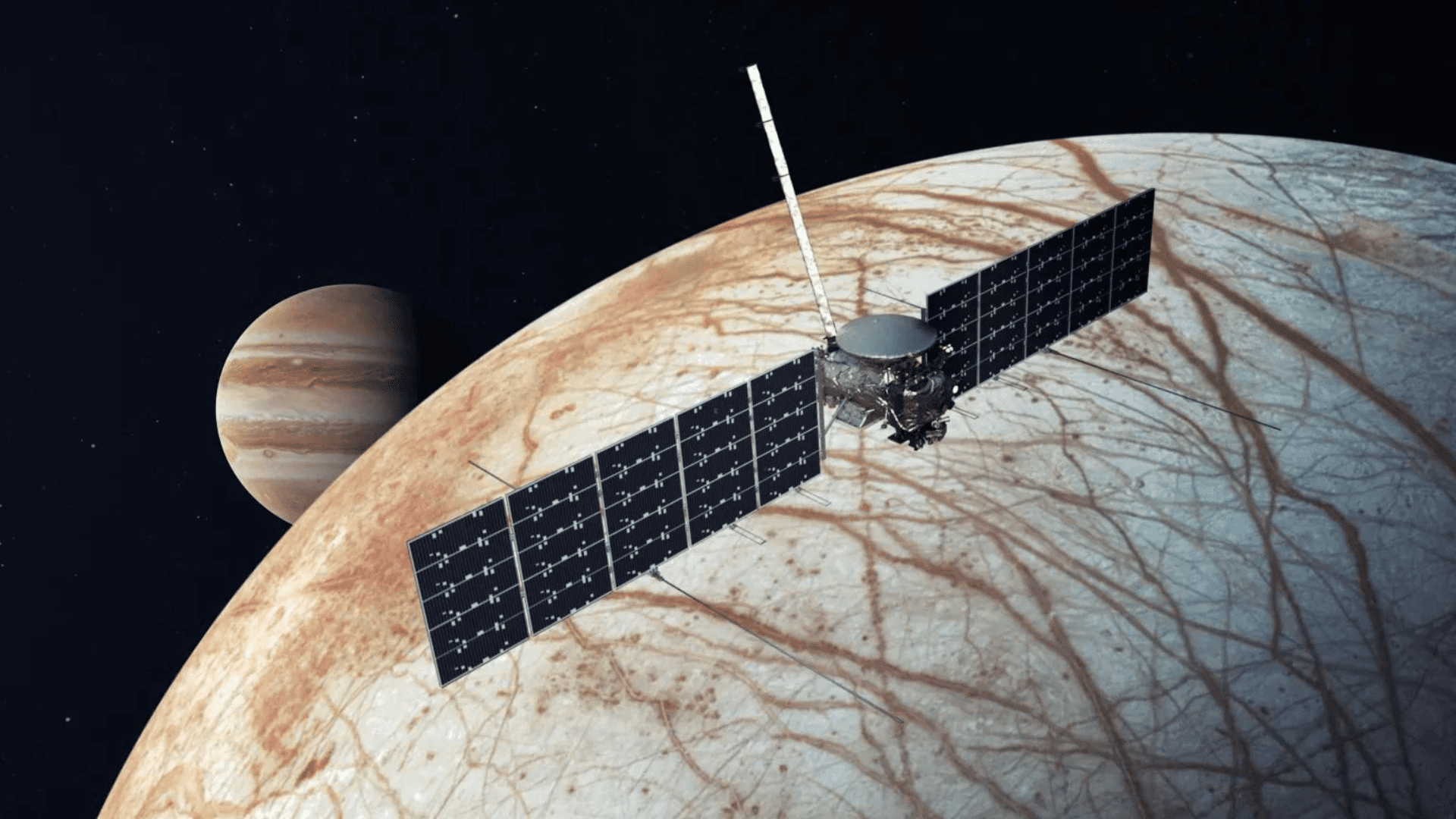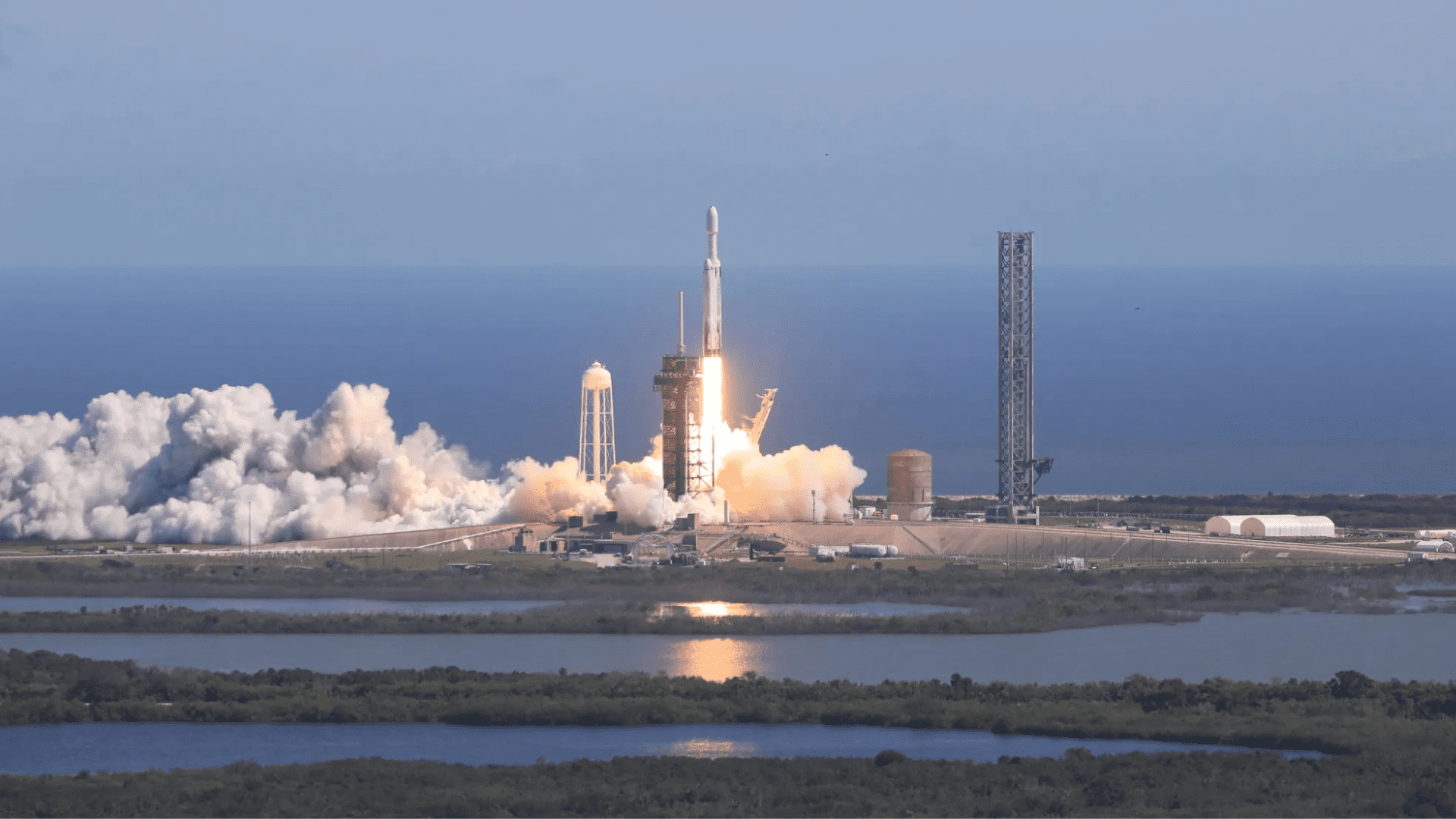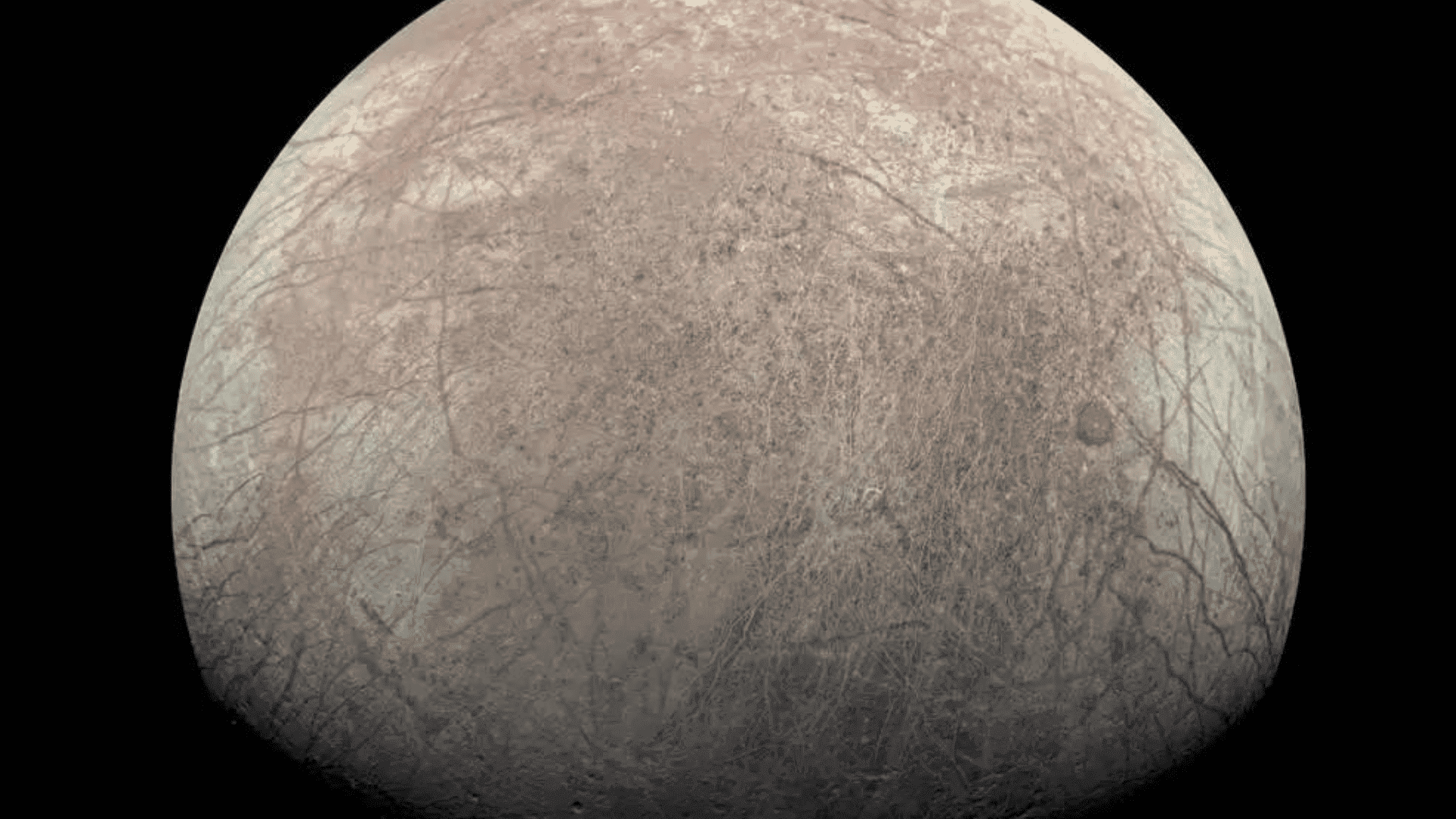NASA’s Europa Clipper mission is on its way to Jupiter’s icy moon following its launch on Monday. It will investigate Europa, a moon with an enormous subsurface ocean that may have conditions to support life.
The Mission

The spacecraft will travel 1.8 billion miles on a trajectory leveraged by the power of gravity assists. First, the clipper will reach Mars in four months, then back to Earth for a gravity assist in 2026. Once it reaches Jupiter’s orbit in 2030, the spacecraft will fly by Europa 49 times. When it comes to space travel, it’s a marathon, not a sprint.
“Congratulations to our Europa Clipper team for beginning the first journey to an ocean world beyond Earth,” said NASA Administrator Bill Nelson. “NASA leads the world in exploration and discovery, and the Europa Clipper mission is no different. By exploring the unknown, Europa Clipper will help us better understand whether there is the potential for life not just within our solar system, but among the billions of moons and planets beyond our Sun.”
NASA’s main mission goal is to determine if Europa’s conditions could support life. NASA’s Galileo mission in the 1990s uncovered strong evidence of a massive ocean underneath Europa’s icy service. One ocean with more water than all of Earth’s oceans combined. If the mission uncovers habitable conditions, NASA believes it means there are more in our solar system and beyond than imagined.
Laurie Leshin, director of NASA’s Jet Propulsion Laboratory, said, “Europa Clipper will undoubtedly deliver mind-blowing science.”
The Launch

Approximately five minutes after liftoff, the rocket’s second stage fired up, and the payload fairing, or the rocket’s nose cone, opened to reveal Europa Clipper. About an hour after launch, the spacecraft separated from the rocket. Ground controllers received a signal soon after, and two-way communication was established at 1:13 p.m. with NASA’s Deep Space Network facility in Canberra, Australia. Mission teams celebrated as initial telemetry reports showed Europa Clipper is in good health and operating as expected.
“We could not be more excited for the incredible and unprecedented science NASA’s Europa Clipper mission will deliver in the generations to come,” said Nicky Fox, associate administrator of the Science Mission Directorate at NASA Headquarters in Washington. “Everything in NASA science is interconnected, and Europa Clipper’s scientific discoveries will build upon the legacy that our other missions exploring Jupiter — including Juno, Galileo, and Voyager — created in our search for habitable worlds beyond our home planet.”
The Journey

“While always bittersweet to send something we’ve labored over for years off on its long journey,” said Leshin. “We know this remarkable team and spacecraft will expand our knowledge of our solar system and inspire future exploration.”
In 2031, the spacecraft will begin conducting its science-dedicated flybys of Europa. Europa Clipper is equipped with nine science instruments and a gravity experiment, including an ice-penetrating radar, cameras, and a thermal instrument to look for areas of warmer ice and any recent eruptions of water.
To power those instruments in the faint sunlight that reaches Jupiter, Europa Clipper also carries the largest solar arrays NASA has ever used for an interplanetary mission.
“As Europa Clipper embarks on its journey, I’ll be thinking about the countless hours of dedication, innovation, and teamwork that made this moment possible,” said Jordan Evans, project manager at NASA JPL. “This launch isn’t just the next chapter in our exploration of the solar system; it’s a leap toward uncovering the mysteries of another ocean world, driven by our shared curiosity and continued search to answer the question, ‘Are we alone?’”







